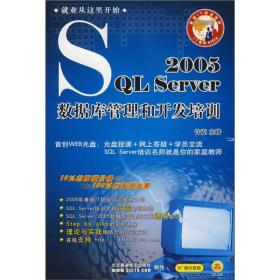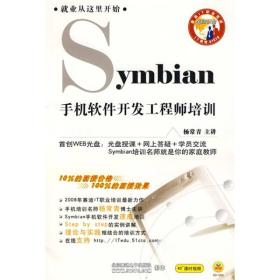
电子磁共振原理(英文版)
本店经营正版新书 两天左右发货 有着急发货的请不要下单
¥ 44.7 3.0折 ¥ 149 全新
库存4件
北京通州
认证卖家担保交易快速发货售后保障
作者徐元植;姚加
出版社清华大学出版社
出版时间2020-08
版次1
装帧其他
上书时间2024-12-25
- 在售商品 暂无
- 平均发货时间 28小时
- 好评率 暂无
- 最新上架
商品详情
- 品相描述:全新
图书标准信息
- 作者 徐元植;姚加
- 出版社 清华大学出版社
- 出版时间 2020-08
- 版次 1
- ISBN 9787302559832
- 定价 149.00元
- 装帧 其他
- 开本 16开
- 纸张 胶版纸
- 页数 936页
- 【内容简介】
- 本书更侧重电子磁共振(EMR)的基本原理。内容包括:绪论,理论基础,g张量理论,各向同性超精细结构,各向异性超精细结构,波谱的精细结构,驰豫理论与谱线的线形线宽,波谱的定量测定,顺磁性气体和无机自由基,过渡族元素离子及其配合物的波谱等十章。
- 【作者简介】
- e entrance to the Department of Chemical Engineering, Beijing University passing through an examination in 1951. Change to Tsinghua University Department of Petroleum Engineering in 1952. He graduated in 1955, and engaged by Dalian Institute of Chemical Physics, Chinese Academy of Science. Since 1960, he was appointed as the group leader of Radical Determination, and started to work on EMR research. He was promoted to be an Associate Researcher in 1979. He was moved to Fujian Institute of Material Structure
- 【目录】
-
Contents
1 Introduction 1
1.1 Origin of EMR 1
1.2 Experimental apparatus 3
1.2.1 Microwave source 4
1.2.2 Resonant cavity and coupling system 5
1.2.3 Magnet 10
1.2.4 Detection system 12
1.2.5 Data treatment system 12
1.3 Target of research 13
1.4 Prospects for future 13 References 14
2 Theoretical basics 16
2.1 Phenomenal description of EMR 16
2.2 Angular momentum and magnetic moment 17
2.2.1 Orbital motion of electron and its magnetic moment 17
2.2.2 Eigen motion of electrons and its magnetic moment 20
2.2.3 Spin angular momentum and magnetic moment of atomic nucleus 23
2.2.4 Electric quadrupole moment of atomic nucleus 25
2.3 Unit of magnetic field 26
2.4 The interaction between external fields and magnetic moment 28
2.5 Interaction of magnetic moment with electromagnetic field in the external magnetic field 30
2.6 Interaction of nuclear magnetic moment with electron magnetic moment in the external magnetic field 33 References 34 Further reading 34
3 g-Tensor theory 35
3.1 Landé factor 35
3.2 Matrix presentation of g-tensor 37
3.2.1 g-Tensor of colour center (cubic symmetry and uniaxial symmetry system) 37
3.2.2 The g-tensor of nonaxisymmetric (lower than uniaxial symmetry) system 39
VIII Contents
3.3 g-Tensor of irregular orientation system 46
3.3.1 g-Tensor of axisymmetric system 46
3.3.2 g-Tensor of nonaxisymmetric system 50 References 52 Further reading 52
4 Isotropic hyperfine structure 53
4.1 Theoretical exploration of hyperfine interaction 53
4.1.1 Dipole–dipole interaction 53
4.1.2 Fermi contact interaction 54
4.2 Energy operator of isotropic hyperfine interaction 55
4.2.1 Spin operator and hamiltonians 55
4.2.2 Zeeman interaction of electrons and nuclei 57
4.2.3 Spin hamiltonian of isotropic hyperfine interaction 59
4.3 Spectral isotropic hyperfine structure 60
4.3.1 System with one magnetic nucleus and one unpaired electron 60
4.3.2 Multimagnetic nuclei with one unpaired electron system 65
4.3.3 Hyperfine splitting arising from other magnetic nuclei 71
4.3.4 Encountered problems in isotropic radical spectra 75
4.4 Hyperfine structure of organic π-free radical spectrum 76
4.4.1 Hyperfine coupling constant of organic π-radical 76
4.4.2 McConnell semiempirical formula 76
4.4.3 Hückel molecular orbital (HMO) theory 77
4.4.4 Calculation of probability density distribution of unpaired electron 79
4.4.5 The Q value of the radical with fully symmetrical structure 85
4.4.6 Hyperfine coupling constant a value of the even alternant hydrocarbons 86
4.4.7 Hyperfine coupling constant a value of the even alternant heterocyclic hydrocarbons 89
4.4.8 Hyperfine coupling constant a value of the odd alternant and nonalternant hydrocarbons 90
4.5 Mechanism of hyperfine splitting in the spectrum of conjugated systems 91
4.5.1 “Electronic correlation” effect 91
4.5.2 The sign of proton hyperfine splitting constant 93
4.5.3 Negative spin density 96
4.5.4 About the Q value problem 96
4.5.5 Hyperfine splitting and hyperconjugation effect of methyl protons 98
4.6 Hyperfine splitting of other (non-proton) nuclei 101
4.6.1 Hyperfine splitting of 13C nucleus 101
Contents
4.6.2 Hyperfine splitting of 14N nucleus 103
4.6.3 Hyperfine splitting of 19F nucleus 104
4.6.4 Hyperfine splittings of 17O and 33S nuclei 105 References 105 Further readings 106
5 Anisotropic hyperfine structure 107
5.1 Anisotropic hyperfine interaction 107
5.2 Matrix interpretation of anisotropic hyperfine interaction 110
5.3 Example demonstration 116
5.4 Anisotropic hyperfine coupling tensor and structure of radical 122
5.4.1 Hyperfine coupling tensor of central atom 122
5.4.2 Hyperfine coupling tensor of α-hydrogen atom 127
5.4.3 Hyperfine coupling tensor of β-hydrogen atom 130
5.4.4 Hyperfine coupling tensor of σ-type organic radicals 132
5.5 Anisotropy of the combination of g-tensor and A-tensor 133
5.6 Anisotropy of A tensor in the irregular orientation system 133 References 135 Further readings 136
6 Fine structure 137
6.1 Zero-field splitting 138
6.2 Spin hamiltonian of two-electron interaction 140
6.2.1 Exchange interaction of electron spin 140
6.2.2 Dipole interaction of electron–electron 144
6.3 The triplet molecule (S = 1) system 153
6.3.1 Energy levels and wave functions of triplet molecules under the action of external magnetic field 153
6.3.2 Examples of triplet state excited by light 156
6.3.3 Examples of thermal excitation triplet state 157
6.3.4 Examples of other excited triplet 159
6.3.5 Examples of ground triplet state 159
6.4 Triplet system of irregular orientation 162
6.5 Biradical 166 References 169 Further reading 170
7 Relaxation and line shape and linewidth 171
7.1 Model of spin relaxation 171
7.1.1 Spin temperature and boltzmann distribution 171
7.1.2 Spin particle transition dynamics 173
7.1.3 Mechanism of the effect of relaxation time τ1 on linewidth 175
Contents
7.1.4 Magnetization in static magnetic field 177
7.1.5 Bloch equation in the static magnetic field 178
7.1.6 Bloch equation in the static magnetic field coupled with the oscillating magnetic field 180
7.1.7 Stationary solutions of bloch equation 181
7.2 Shape, width, and intensity of spectral line 182
7.2.1 Line shape function 182
7.2.2 Linewidth 186
7.2.3 Line broadening 188
7.2.4 Line intensity 188
7.3 Dynamic effects of line shape 189
7.3.1 Generalized bloch equation 189
7.3.2 Chemical exchange broadening mechanism 193
7.3.3 Mechanism of the spectral lines broadening caused by physical motion 200
7.4 Saturation transfer of spectra 214
7.5 Intensity of signal dependent on time 214
7.5.1 Free radical concentration changes with time 214
7.5.2 Chemical-induced dynamic electron polarization (CIDEP) 215 References 217 Further readings 218
8 Quantitative determination 220
8.1 Main factors of influence for quantitative determination 221
8.1.1 Factors of instrument 221
8.1.2 Influence of operating factors 228
8.2 Selection and preparation of standard samples 235
8.3 Key parameters and its effect on the intensity of EMR signal 237
8.4 Achievable accuracy of quantitative determination 239 References 240
9 Paramagnetic gases and inorganic radicals 242
9.1 Spectra of paramagnetic gases 242
9.1.1 Monoatomic paramagnetic gases 242
9.1.2 Diatomic paramagnetic gas 245
9.1.3 Gaseous molecules of triatom and polyatom 256
9.2 Expanding of EMR technique for study on paramagnetic gas 257
9.2.1 Laser electronic magnetic resonance 257
9.2.2 Magnetic resonance induced by electron 257
9.3 Inorganic radicals 258
9.4 Point defects in solid states 261
9.5 Spectra of conductor and semiconductor 265
Contents
9.6 Structure of a molecule structure of a molecule estimated from the data of EMR 268 References 269 Further readings 272
10 Ions of transition elements and their complexes 273
10.1 Electron ground state of transition element ion 273
10.2 Orbital degeneracy is rescinded in ligand field 275
10.3 Electric potential of ligand field 278
10.4 Energy-level splitting of transition metal ion in ligand field 282
10.4.1 P-state ion in octahedron Field (L = 1) 282
10.4.2 D-state ion 283
10.4.3 About F-state ion 286
10.5 Spin–orbit coupling and spin hamiltonian 288
10.6 Ground-state ion with orbital nondegeneracy 294
10.6.1 D-state ions of ground-state orbital nondegenerate 295
10.6.2 F-state ions of ground-state orbital nondegenerate 298
10.6.3 S-state ions of the ground-state orbital nondegenerate 305
10.7 Ground-state ions with orbital degeneracy 310
10.7.1 D-state ions 310
10.7.2 F-state ions 316
10.7.3 Jahn–Teller distortion 320
10.7.4 The palladium group (4d) and platinum group (5d) ions 321
10.8 EMR spectra of rare earth Ions 321
10.8.1 Lanthanide ion 321
10.8.2 Actinide ions 323
10.9 EMR spectra of transition metal complexes 324 References 325 Further readings 327
Appendix 1: Extension and expansion of EMR 328
Appendix 2: Mathematical preparation 399
Appendix 3: Angular momentum and stable-state perturbation theory in quantum mechanics 421
Appendix 4: Fundamental constants and useful conversion actors 442
Appendix 5: The natural abundance, nuclear spin, nuclear magnetogyric ratio of some magnetic nuclei and their hyperfine coupling parameters 445
Index 451
点击展开
点击收起
— 没有更多了 —












以下为对购买帮助不大的评价